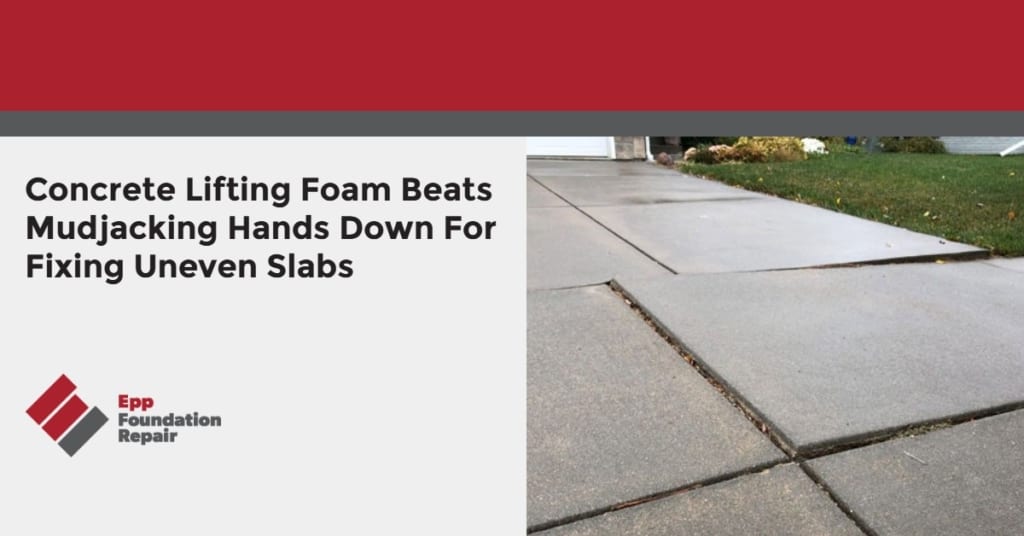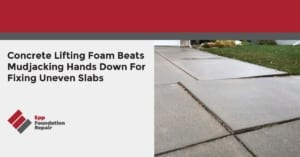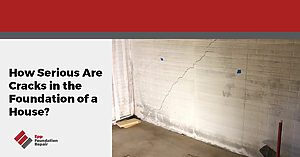If you have a sunken sidewalk, driveway, or some other kind of uneven slab, concrete lifting foam is the fastest way to lift and level it. Most jobs take no more than a few hours, and as soon as the repair is complete, you can begin using the slab again.
In this article, we’ll cover how concrete lifting works, why using concrete lifting foam is better than both mudjacking and concrete replacement, and finish up with a brief discussion about the cost of using foam to lift a sunken slab.
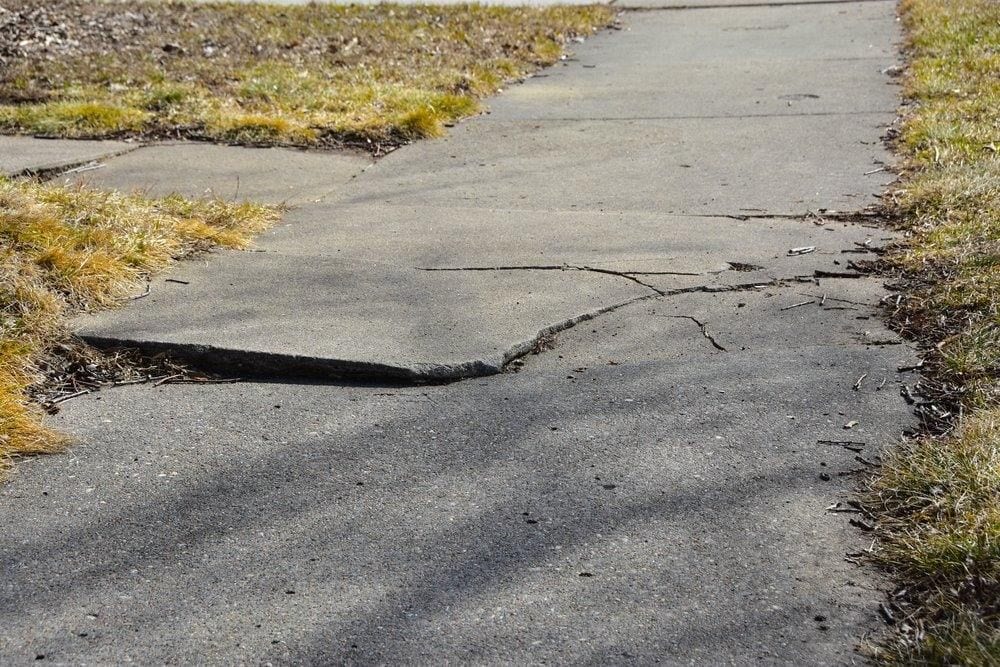
Why Concrete Slabs Sink And Become Uneven
Except for cheese and wine, everything deteriorates as it ages, and concrete slabs are no exception. Over time voids can form in the soil supporting the concrete. When this happens, the slab sinks into them and becomes uneven.
Uneven concrete slabs are repaired using either foam or via an older technique called mudjacking. Both repair methods involve drilling holes in the slab and injecting a substance under the concrete that fills the voids and raises the concrete. However, we believe concrete lifting foam beats mudjacking hands down.
What Is Concrete Lifting Foam, And How Does It Work?
Foundation repair contractors use foam to lift sunken slabs such as sidewalks, driveways, pool decks, garage floors, and more. The procedure involves drilling small, penny-sized holes in the slab and then using the holes to inject the foam under the slab. The foam starts expanding, fills any voids, and lifts the slab. When the repair is complete, the holes are patched to match the color of the slab.
Repairing an uneven concrete slab with foam is a quick, minimally-invasive procedure that usually only takes a few hours. There’s no downtime, and you can begin using the slab again as soon as the repair is done.
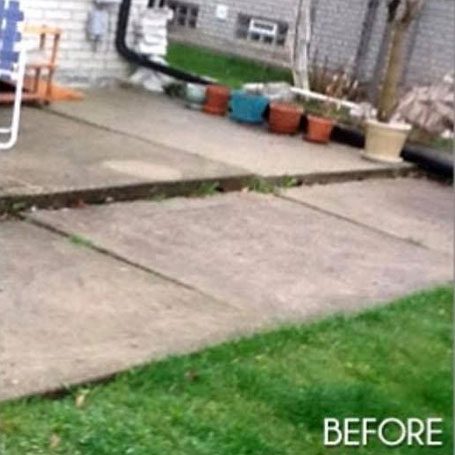
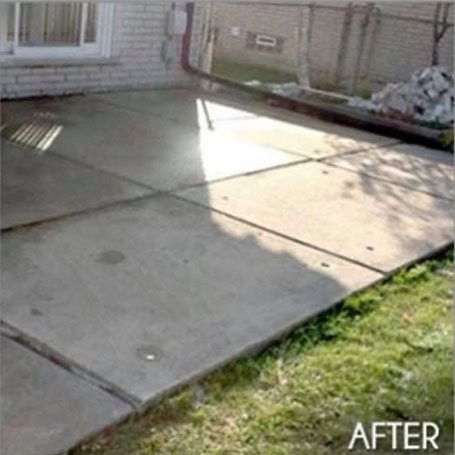
What Is Mudjacking?
Mudjacking is the “old school” method of lifting and leveling sunken concrete slabs. Instead of foam, the contractor uses a cement-based slurry to lift the slab. Holes are drilled in the slab, and the cement-based slurry is injected under the slab to raise it. Mudjacking was once the go-to option for leveling an uneven slab. However, it isn’t nearly as popular as it once was, and today, virtually all concrete lifting is done using foam.
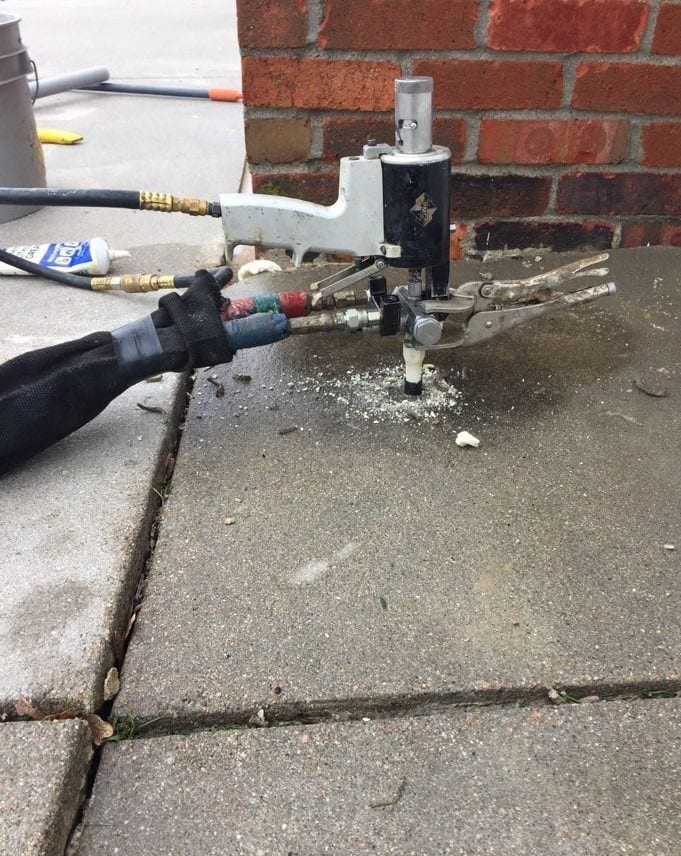
7 Reasons Why Concrete Lifting Foam Is Better Than Mudjacking
1. Concrete lifting foam doesn’t break down over time the way a slurry made of cement and sand will. This means repairs will last for many years. This saves you money in the long run.
2. Lifting a sunken slab with foam usually takes only a few hours. Mudjacking can take the entire day.
3. The holes necessary to inject the foam are about the size of a penny. The holes required for mudjacking are around 2 inches in diameter.
4. Concrete lifting foam has a much higher strength-to-weight ratio than the slurry used in mudjacking. As such, it puts less pressure on the soil beneath the slab while adding significant bearing capacity. Concrete lifting foam can easily support the weight of a slab with a vehicle parked on it. Remember that concrete settles because of unstable soils, which cannot support the weight of a concrete slab and/or vehicles. Mudjacking adds a lot more weight to an already heavy slab and can even worsen the problem.
5. Concrete lifting foam both stabilizes and compacts the soil under the slab.
6. Concrete lifting foam won’t degrade or leach chemicals into the soil. We address this in more detail below.
7. Concrete lifting foam is a waterproof substance. It won’t erode under the slab.
OK, But Why Do Some Claim Mudjacking Is Better Than Concrete Lifting Foam?
Some believe that foam doesn’t fill the voids under the slab. This concern is undoubtedly related to the fact that foam expands rapidly as soon as it’s pumped under the concrete. If it expands too rapidly, it won’t fill all cavities. This is true. However, we can control how rapidly the foam expands by adjusting the temperature of the foam as it’s pumped under the slab. When the temperature of the foam is lowered, the foam travels farther, fills all voids, and then starts expanding.
There’s also a concern that the foam isn’t safe. While it’s true that one component of the foam is slightly toxic, mixing the two components that make up the foam renders the foam safe. This mixing happens at the end of the gun used to inject the foam. So, whatever comes out of the end of the gun is not dangerous for people or pets.
Read more about: PolyLift Concrete Lifting and Leveling
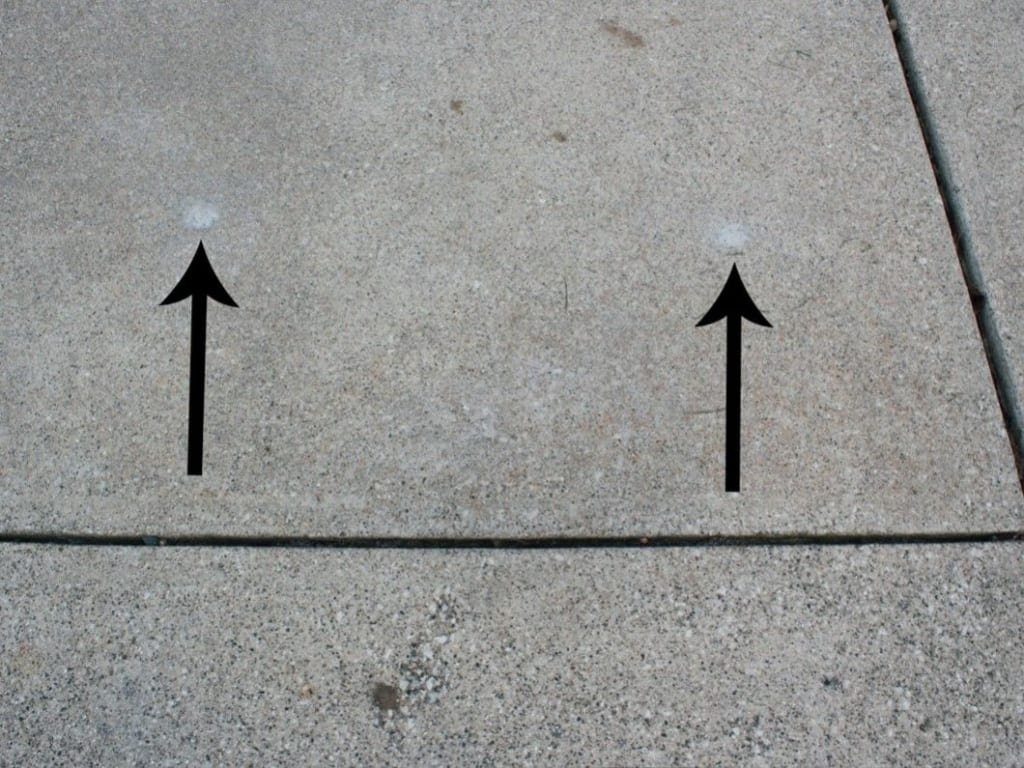
Why Concrete Lifting Foam Is Better Than Concrete Replacement
Digging up and replacing a concrete slab is an expensive, invasive, and time-consuming fix. Freshly poured concrete needs time to dry and harden. This means there’s a certain amount of downtime where you won’t be able to use the slab. Digging up and replacing a slab also costs around twice as much as repairing the sunken slab using foam.
Read more – how to level a concrete floor that slopes.
How Much Does Concrete Lifting Cost?
The cost for lifting and leveling a slab using foam depends on where you live. At Epp Foundation Repair, our minimum for lifting a sunken slab using concrete lifting foam is $1500. The final cost will depend on how much the concrete has settled because this tells us – roughly – how much foam we’ll need to lift and stabilize the concrete. In other words, the price will depend on how many pounds of foam we’ll need to achieve the desired result.
In our service area in Nebraska, Iowa, Kansas, and Missouri, the cost of lifting a sunken concrete slab range from $1,500 to $6,000 or more, depending on the severity of the problem, and if other related services are added.
While mudjacking is less expensive than concrete lifting foam, the slab has a greater chance of sinking again, which means another repair and more money spent. Because mudjacking uses a heavy cement slurry to lift the slab, it could worsen the problem. In contrast, concrete lifting foam is ultra-lightweight and won’t burden the soil with additional weight. Your lifted slab will stay lifted.
If you have a sunken concrete slab in our service area, contact us today for an estimate.

